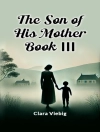In ’Allison Bain; Or, By a Way She Knew Not, ’ Margaret M. Robertson masterfully weaves a narrative that explores themes of identity, social conventions, and the intricate dynamics of female relationships in the 19th century. Set against the backdrop of Victorian society, the novel employs a rich, descriptive literary style that draws readers into the emotional landscapes of its characters. Robertson’s keen attention to dialogue and nuanced characterization invites a thoughtful examination of the constraints placed on women, while also illuminating their resilience and agency. Reflecting the broader context of women’s literature during the period, this work stands out for its exploration of domestic spaces as sites of both restriction and rebellion. Margaret M. Robertson (1824-1897), an accomplished author and advocate for women’s rights, writes from a unique vantage point that combines her personal experiences with a broader awareness of societal issues. Her background in literature and keen observation of contemporary gender dynamics inform the motivations behind Allison Bain’s journey. Robertson’s commitment to giving voice to women’s struggles resonates deeply in this novel, reflecting her desire to challenge the status quo and highlight female empowerment. Readers seeking a profound and engaging exploration of women’s lives in a historically rich context will find ’Allison Bain’ compelling. Robertson’s attention to detail and character development not only creates a relatable protagonist but also invites readers to reflect on their own notions of identity and societal expectations. This novel is a significant contribution to the canon of women’s literature and a must-read for anyone interested in the complexities of the human experience.
Om författaren
Margaret M. Robertson, a writer whose literary journey reflects the vivid tapestry of the Victorian era’s moral narratives and domestic fiction, delineates the complexities of faith, character, and destiny in her works. Primarily known for ’Allison Bain; Or, By a Way She Knew Not’, Robertson painstakingly constructs a narrative that interweaves spiritual growth with the trials and tribulations of her protagonist, resonating with the themes of divine providence and personal perseverance. While specific details of her life remain sparsely documented, Robertson’s contributions occupy a niche in 19th-century literature that often explored religious didacticism through the lens of women’s experiences (Gardiner, 2005). Her writing style encapsulates the era’s predilection for moral instruction, combined with a compelling narrative drive that captures the nuances of individual struggles against life’s vicissitudes. Reverberating with echoes of her contemporaries such as Elizabeth Gaskell and Charlotte Yonge, Margaret M. Robertson’s work reflects a commitment to probing the moral fibers of society, whilst providing an empathetic portrayal of her characters’ inner lives. Not merely a mirror to her times, but also, in her subtle way, a lens focusing on the often-underrated fortitude within the domestic sphere, Robertson’s writing continues to inspire a niche readership, drawing attention to the intersectionality of theology, gender, and narrative in Victorian literature.












